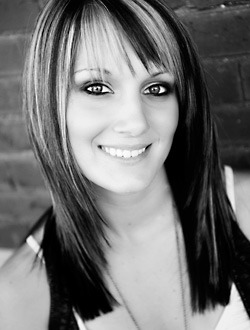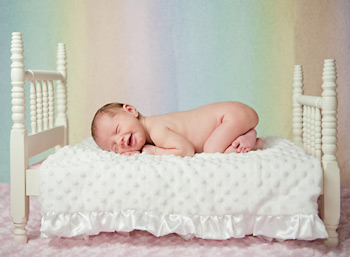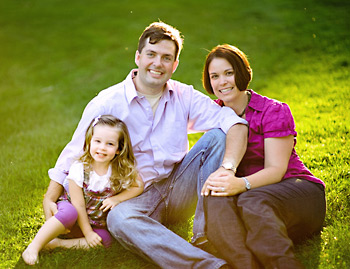I used to be a shoot-and-burn portrait photographer, but wow was that a mistake. I don’t even want to think about how much money I lost by doing things that way.
It made logical sense to me. I am mainly a wedding photographer, and I didn’t promote my portraits much at all because I simply didn’t have time for them or for placing print orders. People got their disk of images, an occasional 8×10, and it was quick and easy.
If someone had told me that I’d effectively triple my average portrait sale by taking the extra time to do in-person ordering sessions, I could have shot fewer portraits and still made more money in the same amount of time.
I’m not going to claim to be super-experienced in this because I’m not. I just changed to this method of sales this year. But the results so far have been ridiculously amazing. I had heard from other people that this was the case, but it was hard to fathom that I could have sales as high as they were saying. But the results are amazing.
Here’s what I did to drastically increase my average portrait sale.
I determined what our target portrait sales amount should be
This year, with both my husband and I transitioning to full-time photography, we wanted to include portraits into our income projections and not just weddings like we had done in the past. Seeing as I had never seen a pricing guide that included methods for pricing both weddings and portraits in a useful way, I created a pricing guide that could price any number of types of sessions. Using the Photographer’s Pricing Guide that I created, we determined how many weddings and portraits we’d need to do to support our family, and we were able to create sales goals for both portraits and weddings using it.
I created a package structure that makes people choose the package that I want them to buy most of the time
I never used to have packages. I simply charged a session fee and them let them buy the disc or prints afterward, all of which were ordered through an online gallery that I posted for a month. I hardly made anything, and I even had a few clients here and there who never ordered simply because they never got around to it.
So I purchased and read the Creative Pricing and Packaging for Photographers ebook from Tofurious (affiliate links). It’s brilliant. I set up 4 different packages in such a way that that most people should select at least my target portrait sales goal, if not more. It’s amazing how well it works.
I started doing pre-consultations to set expectations
 Once I have a customer interested in portraits, I meet with them or do a phone consultation that makes the process completely clear to them. Setting up expectations has been one of the most vital things to do to make the entire process run smoothly and keep clients from getting cranky.
Once I have a customer interested in portraits, I meet with them or do a phone consultation that makes the process completely clear to them. Setting up expectations has been one of the most vital things to do to make the entire process run smoothly and keep clients from getting cranky.
We talk about what to expect during the shoot, what to wear, and our style of shooting. I also answer any questions or talk about any concerns that they have.
I tell them that we’ll meet again after the proofs are ready for a viewing and ordering session. I make sure that they know to have all decision makers at this meeting as this is when they will be placing their order and seeing their images for the first time.
I stopped doing sneak peeks and online galleries until the sales appointment
I read this post by Elizabeth Halford and it all clicked. People lose their excitement after seeing a sneak peek online. I want the first time they see their photos to be in our ordering session. Not only do you get the satisfaction of hearing how much they love their photos, but they’re more likely to place larger orders.
There’s also no temptation for them to steal the images so that they don’t have to order as much. Even if you take every precaution on the books, I know people who have taken a photo of their computer screen with their phone camera and tried to print from that. Lame.
I schedule their ordering session in their home
I tell people in the initial consultation that the viewing and ordering session is normally held in their homes. I bring black foam board in standard portrait sizes ranging from 8×10 to 24×36 with me so that we can walk around their house and see what size portrait would be best on each wall. This also makes 8x10s look completely puny, which is the goal. Many people think this is a proper size for a wall, when really it’s better suited for a desk or shelf.
I use black foam board because there are no images on it. People can easily get distracted by their opinion of an image when you simply have a photo sample in that size, so having black foam board helps them to focus on size alone. (Thanks to my friend Emily for that awesome tip!)
If people aren’t willing to do an in-home ordering session, I’m willing to meet in a coffee shop (we don’t have a studio since we are mainly wedding photographers) but I explain that doing it in their home allows us to help them choose which images and sizes would look best, and people appreciate the advice.
I bring 5×7 printed proofs, not digital proofs on a laptop or a projector
 My friend Trisha mentioned this tip to me, and it’s backed up by psychology studies. People value something that is physically in front of them more highly than if they simply see an image of it. So I get 5×7 proofs printed through ProDPI. Yes, it costs me more than just showing them the proofs on a laptop, but I believe it is worth it.
My friend Trisha mentioned this tip to me, and it’s backed up by psychology studies. People value something that is physically in front of them more highly than if they simply see an image of it. So I get 5×7 proofs printed through ProDPI. Yes, it costs me more than just showing them the proofs on a laptop, but I believe it is worth it.
I have them make piles. The “Must-have” pile, the “Maybe” pile, and the “I can live without it” pile.
With physical proofs, they can spread them out on a table and never forget that an image is there. It’s easier to compare, they get to see exactly what the colors look like when printed, and it’s really, really hard for them to put a photo in the “I can live without it” pile.
Then we start by picking the image they want for their main wall portrait. We pick any other large portraits or canvas that they want.
Next we pick gift prints and smaller prints.
Finally, they are left with a pile of images that they can’t live without but that they still haven’t ordered. It’s at this point I suggest they consider an album or digital proofs on disc. It works great as a low-pressure way to up-sell at the end of the session. While it may seem like a hard sell, it’s really quite easy as their desire to have those images will sell these items for you.
Offer incentives for hitting certain portrait sales amounts
I like to offer the printed proofs for sale at a large discount if they hit a certain sales amount. If they buy the entire digital disc in addition to a nice print order, I’ll throw them in for free. This way they’ll see how much nicer the pro lab prints look compared to the retail labs that they try to print from. Smaller digital images for Facebook or their mobile phones is something else I think will be a popular add-on incentive.
That’s it. Switching to that method of sales has been the best move I’ve made in my portrait business alone. I only wish I had been doing it that way from the beginning.
I know there’s a lot of different ways to do portrait sales, so let’s discuss it a bit. Leave a comment below and share what you do and how it’s worked for your business.
If you found this post helpful, subscribe to our blog via email.


